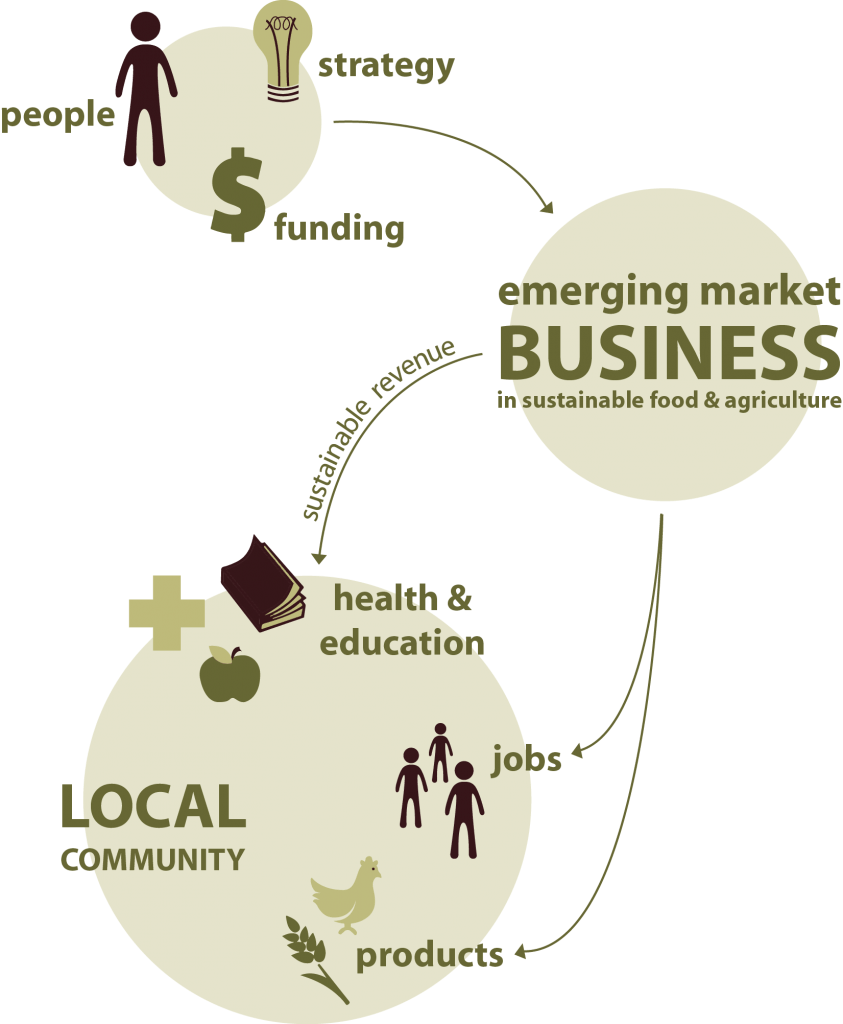Policy Points: Is Chemical Reform Coming In the 2016 Congress?


By Zach Bernstein
As we move into the new year, one major question continues to emerge: In an election year, will Congress be able to pass anything?
It’s accepted wisdom in Washington that, particularly with presidential elections, the odds of any major legislative victories becomes slim, even in the best of times (which this isn’t, at least as far as passing legislation goes).
Members are out campaigning and often are reluctant to take tough votes that could be used in campaign ads – or perhaps worried about letting members of the opposing party trumpet legislation they got passed.
Somewhat surprisingly, though, there is one issue that Congress continues to move on, and which could yield modest gains for consumers and businesses alike.
The road to reform
The issue is chemical regulation reform, an area that’s in desperate need of an update. Existing federal law, the Toxic Substances Control Act (TSCA), hasn’t been updated since it passed in 1976. And there’s a lot that’s wrong with it.
While the law was designed to allow the EPA to test chemicals for safety, tens of thousands of chemicals have never been tested because they were on the market before TSCA was passed and got grandfathered in. The EPA has only managed to restrict five chemicals, and it lacks the power to do more due to a court decision that tied the agency’s hands – a problem only Congress can fix.
This is why the past several Congresses have pushed for TSCA reform, culminating with the introduction of two pieces of legislation in the House and Senate last year.
The next step is for negotiators from the House and Senate to hammer out a compromise bill that both houses will approve. The good news is, there’s actually potential incremental progress in these bills at the outset of negotiations.
The bad news is, there’s also a lot not to like that could make the final bill worse than existing law.
Strange brew
That’s particularly true with the Senate bill (S.697), known as Udall-Vitter for its bipartisan co-sponsors, who introduced different versions of the bill in previous Congresses. Much of the bill has been improved from its initial incarnation as a chemical industry wishlist. Specifically, it now includes provisions that improve transparency and create a funding mechanism for EPA to actually get chemical review work done.
But many issues remain in the current bill, including some that make it fall far short of meaningful reform. For one, it would require that a number of chemicals be set aside as “low priority,” which would let potentially harmful chemicals off the hook with relatively little scrutiny from EPA. The EPA would also have more hurdles to intercept imported products that include potentially hazardous chemicals, and expend time and resources on tasks that distract from reviewing chemicals.
Worst of all however, the bill would pre-empt states from taking action on so-called “chemicals of concern” while the EPA is studying them.
The danger goes beyond risks to consumers. Companies that produce chemicals, or use them to make their products, can be put at risk from potential health hazards that can surface years later (think fiberglass and asbestos). These can bankrupt companies and destroy entire industries. If they can’t learn which chemicals are dangerous and which aren’t, businesses nationwide could be put at risk. That’s especially unfortunate for those trying to do the right thing.
Let’s get together
Fortunately, the House legislation improves on much of this. It would not pre-empt state action before the EPA makes a decision, and removes the legal barriers that were hampering EPA. While the House bill has its own issues, like inadequate resources for EPA, it does have a lot of positive language, like a faster schedule to review chemicals and allowing EPA to get to its critical work right away.
Which brings us back to the next step for chemical reform: reconciling the two bills. Negotiators will be meeting to hammer out differences between their bills, both of which are decidedly mixed bags.
Congress has a chance to do this right, but any final legislation needs to meet key principles in order to represent truly meaningful reform: Transparency for existing chemicals, a minimum safety level (with room for states to surpass it), and innovation to support the development of safer alternatives, not codify the status quo.
Both the House and Senate bills have elements that would help achieve these goals, but also much that wouldn’t. And while many businesses expressed some worry following the Senate vote, there was clear agreement on one thing: The negotiation process offers a golden opportunity to combine the best parts of both bills into a final version.
There may be few opportunities for major policy victories in the rest of the year, which is why it’s crucial for businesses to stay involved in pushing for meaningful chemical reform when the negotiators meet. This is a policy area in desperate need of an overhaul. Done wrong, however, it could end up having disastrous consequences.
Image credit: Pixabay
Zach Bernstein is Manager of Research and Social Media for the American Sustainable Business Council.
Playing Our Part: The Bigger Play Around Super Bowl 50


By Robin Raj
So the circus has officially hit town, and we Bay Area residents are now bracing ourselves for the excitement, onslaught and hoopla surrounding the biggest of big games. And while some are quick to dismiss the Super Bowl as nothing but moneyball writ large, or fear a looming ‘Bowl-agedeon,' this year there’s another story playing out that may not get the media attention it deserves.
That’s because the SF Bay Area Super Bowl 50 Host Committee has publicly committed to make this the first ‘net positive Super Bowl’ -- a commitment to do more good than harm for Bay Area communities, socially, environmentally and economically. In other words, they are aiming to use the immense power of the world’s single largest one-day sports event as a platform to do good – and they should be acknowledged and applauded for it.
It began with the Host Committee’s commitment more than a year ago to set aside 25 percent of all corporate sponsorship dollars raised around Super Bowl 50 to benefit local communities and our environment. A unique goal, to be sure. It followed with creation of The 50 Fund, a grant-making program that’s on track to deliver some $6 million dollars to more than 130 local non-profits. And it will come to life in these last days by inspiring local fans to play their part by reducing their collective impacts.
That’s what led to creation of the ‘Play Your Part’ campaign, developed and co-sponsored by my agency Citizen Group, our technology partner in/PACT, and the SB50 Host Committee. Fans are being encouraged to make this ‘the most sustainable, shared, and giving Super Bowl ever’ by taking positive actions while attending Super Bowl events, such as carrying reusable containers, recycling properly, taking public transit, hosting sustainable Super Bowl parties, and offsetting their carbon emissions from travel.
Play Your Part | Super Bowl 50 from Citizen on Vimeo.
For their actions, fans will also be given the opportunity to direct dollars to deserving Bay Area environmental non-profits using the ‘Play Your Part’ online giving platform powered by in/PACT. And as a thank you, fans will be automatically enrolled in a daily prize drawing where they can win tickets to Super Bowl 50, special Super Bowl City events such as the CBS Metallica concert, as well as sustainable merchandise and collectibles.
The ‘Play Your Part’ campaign links directly to the four key pillars that girder the Host Committee’s net positive commitment:
- Reducing impact on climate change by delivering a low emissions event,
- Responsibly using and recycling materials and resources,
- Inspiring fans to embrace sustainability personally, and
- Leaving a lasting legacy for the Bay Area at large.
So, is all of this simply small-ball? Well, if you’ve ever witnessed a stadium filled with 70,000 fans, you know the environmental impacts on any given Sunday can be significant. What’s more, few sectors in our society are as influential as sports in raising consciousness and inspiring behavior change. As Green Sports Alliance president Allen Hershkowitz is fond of observing, only 13 percent of Americans say they follow science, yet 61% claim themselves as sports fans.
Sports is the ultimate cultural unifier. If we’re serious about shifting the mindset of fans and suppliers towards ecologically preferable products and behaviors, we need to engage with leagues and teams, and harness the mighty power of the sports industrial complex.
By working closely with the Green Sports Alliance and the Natural Resources Defense Council over the past decade, my agency Citizen Group has had a front row seat to watch the rise of a global sports greening movement, as teams and alike align with healthier practices. Major League Baseball, the NBA, NHL, NFL, NCAA, USTA and MLS have all engaged and the case studies abound. If you like following your favorite team’s stats, you might enjoy reviewing the metrics contained in this 2013 NRDC report, GAME CHANGER: How the Sports Industry Is Saving The Environment or watching the honoree film we produced.
All of the action proves that a net positive goal, while ambitious, is important and achievable.
This will be part of the story of Super Bowl 50. A Super Bowl the Bay Area way, and one that will hopefully set a higher standard for big games to come.
And that’s something to get excited about.
Image credit: Pixabay
Robin Raj is founder and executive creative director of Citizen Group, an award-winning, San Francisco-based agency dedicated to building “citizen brands.” Citizen works with companies and organizations to shape values-based strategies and then brings them to life through creative campaigns, media initiatives, and community activations that inspire, inform, and invite audiences to participate. citizengroup.com
Hong Kong’s Hang Lung Properties clinches top reporting award


Hang Lung Properties, Hong Kong clinched Asia's Sustainability Reporting of the Year Award at the inaugural event in Singapore this week. The company also won the Best Sustainability Report category.
Other top winners included Commercial Bank of Ceylon, Sri Lanka (Asia's Best Integrated Report), Omnicom Media Group MENA, Dubai and ACWA Power, Dubai (Joint winners of Asia's Best First Time Sustainability Report), ADFIAP Philippines (Asia's Best Sustainability Report-SME), Orient Overseas Container Line, Hong Kong (Asia's Best CSR Communication within Annual Report) and Birla Carbon (Asia's Best Online CSR Communication). Birla Carbon also won Asia's Most Transparent Report award.
The awards are the brainchild of Rajesh Chhabara, managing director of CSRWorks International, to encourage more companies to report on their sustainability and also form part of the CSRWorks own corporate responsibility programme.
“Our vision is to become the most inspiring recognition for sustainability disclosure in Asia,” commented Chhabara.
“The Asia Sustainability Reporting Awards creates a much needed platform for sharing best practices, benchmarking and peer learning by bringing together the leaders in sustainability reporting. The Awards also provide an excellent opportunity to organisations to showcase their sustainability excellence and build trust among their stakeholders.”
The SEC Isn’t Enforcing Climate Risk Disclosures By Fossil Fuel Companies


Shares of the world’s largest private-sector coal company, Peabody Energy, are trading at about $4 apiece. That leaves a lot of investors with millions in losses. Coal has been displaced by the natural gas boom and climate change concerns also play a role, energy correspondent David Gelles pointed out in a recent piece in the New York Times.
Peabody Energy is an old company that has long been criticized. An old bluegrass tune called “Paradise” references strip mining by declaring about a Western Kentucky town, “Mr. Peabody’s coal train has hauled it away.” But today’s criticisms have more to do with the company’s failure to disclose climate change risks.
Back in November, Peabody agreed in a settlement to disclose more about climate risk in its filings to the Securities and Exchange Commission (SEC). This came after the New York state attorney general conducted a two-year investigation. The company agreed to center its financial disclosures around two main areas: an emphasis on the published scenarios in the International Energy Agency's (IEA) World Energy Outlook report, and the ability of the company to estimate the impacts from future laws or regulations.
Peabody is not the only fossil fuel company to fail to disclose climate change risks. ExxonMobil, the largest oil and gas company in the U.S., is being investigated by both California and New York for not disclosing climate risks to investors and the public.
So, what does it say about the SEC? Consider that in 2010 the SEC issued interpretive guidance on climate risk disclosure. The interpretative guidance highlighted certain areas as examples of where climate change may trigger disclosure requirements, which include the impact of legislation and regulation, the impact of international accords, and physical impacts of climate change.
"We are not opining on whether the world's climate is changing, at what pace it might be changing, or due to what causes. Nothing that the Commission does today should be construed as weighing in on those topics," SEC Chairman Mary Schapiro said in 2010. "Today's guidance will help to ensure that our disclosure rules are consistently applied."Unfortunately, Schapiro’s words proved to be hollow, as a letter sent last spring by 62 institutional investors representing over $1.9 trillion in assets to the SEC proves. “We are concerned that oil and gas companies are not disclosing sufficient information about several converging factors that, together, will profoundly affect the economics of the industry,” the investors wrote. They “believe it is crucial that SEC staff closely scrutinize oil and gas companies’ reporting on carbon asset risks under existing SEC rules,” and specifically asked for the SEC to “scrutinize disclosures in annual filings” by oil and gas companies regarding “carbon asset risks.”
The New York state comptroller also sent a letter to the SEC last spring asking for it to “act to improve corporate disclosure of material risks in the fossil fuel industry.” The letter stated that “at a minimum” companies in the fossil fuel industry should disclose their analysis of three key areas:
- Risks to fossil fuel reserves associated with greenhouse gas emission reduction policies that may be adopted by national, state and local governments.
- Risks to company assets associated with physical risks of climate change including sea level rise and extreme weather.
- Risks and opportunities stemming from changes in the market associated with climate change mitigation policies and initiatives.
The SEC is reviewing its requirements for what companies must disclose, the New York Times reported, and new rules may be introduced this year. Given the laxity the SEC has shown regarding climate change risks disclosures in the past, it is time for the commission to enforce its requirements. Investors have the right to know about operational risks.
Image credit: Flickr/Ken Hodge
How These 'Aunts' Used Business to Raise a Generation of Nicaraguans


Do you walk to work each morning? Imagine stepping over and around children sprawled out across the sidewalk, hungry, homeless and unconscious from sniffing toxic glue. What do you do?
This question plagued the minds of nine merchant women working in Leon, Nicaragua’s largest market, in September of 1989.
Nicaragua’s Civil War officially ended in 1979 with the expulsion of the brutal Somoza dictatorship and a victorious Sandinista regime. Having cost the lives of roughly 50,000 men and women soldiers (the exact number is unknown), the war left in its wake a generation of children on the street -- some orphans, others abandoned, and many victims of violence and sexual exploitation. Without the prospect of education or work, they were left hungry, desperate to steal their next meal from the very market stalls managed by the women merchants.
Emergence of Las Tías
None of the women had benefited from formal higher education, yet they felt compelled to intervene. Led by the so-called “Market Mayor,” Leonza Corina Alvarez, the women called themselves Las Tías ("the aunts"). At first, they scrapped together the resources to feed and provide basic necessities for the children. However, their longer-term vision was to create a sustainable mechanism for delivering economic and emotional support. Drawing upon the skills and experiences learned in peddling clothes, basic grains, dairy products, fruit juices and other popular goods, they developed vocational training programs designed to prepare these youth for future economic livelihood.
Originally turning toward relatively easy-to-learn work like piñata making and car washing, the vocational programs have since evolved to encompass a range of more reliable professions. Today, the Las Tías center is home to a leather workshop, sewing school, barber shop, carpentry workshop and computer-training center. Recently, Las Tías was granted a license to offer technical training which gives more formal legitimacy to the students' expertise in a society where technical titles are critical to marketability.
To enhance their capacity to maximize impact, several women of Las Tías pushed to further their own limited education by enrolling in courses at technical schools and even completing programs at the local university. They also hired social workers to more effectively address the psychological challenges experienced by their students.
Of last year’s group of 80 students who benefitted from Las Tías’ vocational training, only three have moved on to earn scholarships to attend the local public university. This low rate of continued education underscores the significance of the vocational training which is designed to empower youth with skills to create a sustainable livelihood.
More than 25 years after its inception, Las Tías is still far too under-equipped to adequately address all the challenges experienced by youth in Leon. To date, Las Tías has served 850 adolescents and 1,060 children, yet extreme poverty and child labor affects more than 167,000 youth across Nicaragua. Recognizing its own limited capacity for impact at scale, Las Tías has pursued partnerships with both local and international organizations to implement a variety of projects impacting the community.
Recognizing that challenges affecting local youth begin earlier than 14, Las Tias built another nearby facility to house programs for younger children ages 6 through 13. They even spawned another NGO called Niño’s de 14 to build quality houses and generate employment opportunities for families living in a nearby impoverished community just outside of town.
Las Tías’ influence on other local organizations is undeniable. Many local churches, historically lacking in social programs and youth education, in particular, are finally beginning to offer similar types of programs. Through its inspiring success, Las Tías has managed to attract the attention of several international organizations. One Houston-based nonprofit, Amigos de las Americas, facilitates internships and gap-year placements that have provided much-needed assistance to a range of projects with Las Tías.
Partnership with Spark Ventures
Over the past several years, Las Tías has built a deep partnership with Spark Ventures, a Chicago-based nonprofit committed to offering assistance in forms ranging from funding to volunteers and business strategy. Perhaps most interestingly, Spark is building profit-generating social enterprises designed to fund the operations and ambitions of Las Tías as it prepares for a sustainable and bright future.
In 2014, Spark Ventures and Las Tías formed a joint-venture in order to launch an agribusiness, growing cacao and supporting honeybee apiaries among other crops. The profits from this business will liberate Las Tías from a 25-year history of depending on the traditional dollar-in, dollar-out philanthropic model, freeing its staff to allocate resources and direct energy toward what they do best.
Additionally, Spark Ventures is pioneering a concept they call ‘impact travel.' Spark goes beyond facilitating opportunities for traditional skills-based volunteering to design experiences where people can engage more deeply with both Las Tías and Hope Ministries, Spark's partner in Zambia. An impact travel experience with Spark might include extended time with local leaders like Corina, volunteering with children, and engaging with the culture, history and the natural beauty of the country.
Las Tías believes that a more secure childhood and adolescence should be a basic universal right: “We believe that providing safe spaces where children can learn and experience the challenges of growing up is a crucial step for the advancement of our society."
After spending a couple of days visiting with founder, Leonza Corina Alvarez and Director, Magno Berbis, the key to Las Tías' success was clear. They aren't just charitable business people. They have demonstrated a willingness to step into the lives of local children as family. As we parted ways, Corina left me with warm words that would both welcome and ensure my eventual return: "Remember, you have family here, you have friends here. What more do you need in life?"
To learn more about Spark Venture's business-driven philanthropy model and opportunities to support Las Tías, click here.
Image credits: Las Tías & Spark Ventures
Oregon Militants Arrested, But Is It Really Over?


The altercations that led to the arrest of eight militants and the death of another outside the Malheur National Wildlife Refuge on Tuesday night signaled an abrupt change in the standoff that has pitted federal and local governments against armed occupiers for weeks. But it also drove home a question that many are asking: What will it take to resolve the ethical and philosophical standoff that's pitting communities against the federal government?
In the equally remote ranchlands of Idaho where I live, the question is just as salient. There is a growing disillusion with what it takes small farmers and ranchers to make a living. A 2011 report by the Department of Agriculture underscores this point: The cost for small ranches (under 50 head of cattle) to maintain their herds is four times what it is for large ranches (500 or more). And, as Tom Philpott points out in the Mother Jones, that also means there is limited incentive for small ranches to stay small: Mom-and-pop operations that bolster the organic or other niche markets have to fight all the harder to stay in business.
At the heart of that battle is grazing rights: the ability to feed cattle on land that is billed as "public lands." It's a controversial issue, and it has become more so for environmentalists who often see these public lands as the last hold-out for declining species; public agencies also realize there is a need to protect those species.
Yet the truth is, despite what the Malheur militants have suggested, many ranching communities have a good hand-in-glove relationship with local public agencies like the Federal Bureau of Land Management (BLM). In one southwest Oregon community, ranchers work patiently with the BLM when grazing lands need to be adjusted to accommodate migrating flocks. Public lands like Malheur often exist for the benefit of the local ranchers as much as the wildlife enthusiasts, both of whom pay into the system that supports the maintenance of those lands.
In this day and age of dwindling public resources and escalating costs, it's sexy to occupy federal buildings and lands and make broad-sweeping statements about returning those lands to a time and place when guns settled issues more than taxes and negotiations. But standoffs don't get jobs done. They don't pay for fire mitigation or stop rampant disease that threatens stocks and water resources.The free-for-all approach that Ammon Bundy has proposed won't keep those lands clean and those resources available for grazing. And it won't pay the bills.
And they don't really protect rights either, as the militants would like to suggest. Bundy's fight is an age-old battle that, thankfully, many rural communities founded by white pioneers have realized was not only unjustifiable, but unethical to assume. Small communities in the 21st century realize that survival is very much a partnership with local tribes, and there is little gain in arguing who came first. Raising that red flag only raises old scars and old prejudices.
It's probably no coincidence that the Bundy clan picked Malheur to hole up -- an area that, as its name describes, is known as much for misfortune as for its once populous migration of pioneers. It's a name that pegs the sentiment well when it comes to the struggles of small ranchers these days, who face escalating costs, dwindling resources and at times intransient federal agencies. But as the past weeks demonstrated and continue to play out, it hasn't been the support of local ranchers that gave the Bundy clan a microphone, but that very social media he professes not to use: a media that can fuel discord better and faster than any town meeting and that inevitably captures media attention.
And that is perhaps the most worrisome aspect of this standoff. The militant takeover of a refuge that many Oregonians, let alone Americans in general, couldn't have found on a map two months ago has publicized not the plight of the average struggling rancher, but the value of a stunt orchestrated by carefully-dressed militants with a penchant for fame.
Images: 1) USFWS- Pacific Region; 2) Oregon Dept. of Transportation; 3) USFWS - Pacific Region
The Economics Behind Falling Oil Prices


By Anum Yoon
It’s no secret that oil prices have been collapsing for quite some time now. A barrel of crude oil recently sold for less than $30 — the first time that’s happened since 2003. To put that number in perspective, a barrel of oil sold for $107 in July 2014.
Since then, the price has fallen steadily. To date in 2016, oil already lost more than 20 percent of its value, and more than 250,000 workers in the oil industry lost their jobs due to the erosion of the commodity’s value.
But folks from all over the world depend on oil. While we might wish we could use sustainable energy in all aspects of our lives, that’s simply not the case for the vast majority of us. If oil is still in high demand, why are its prices tumbling so drastically?
Quite simply, it’s a marriage between at least four realities.
1. The United States falls in love with fracking
On one hand, the answer is an easy one: Due to breakthroughs in technology, it’s easier than ever to produce oil in the United States — which is the world’s leading consumer of oil.
This, of course, can be attributed to the rise of fracking, the process by which companies use high-pressured water streams to release gases from rocks buried far beneath the surface of the Earth. Despite President Barack Obama’s pledges to reduce America’s drilling capacities during his presidency and wean the country from oil, his two terms were the source of an explosion in the U.S. oil market. In fact, the country is drilling more today than it ever has before.
Thanks to this expansion, Americans are paying considerably less at the pumps. They’re also paying a lot less for heating oil and diesel, too.
Since the U.S. is now producing so much oil, the country and its citizens don’t have to rely so much on oil from the Middle East and other OPEC nations. Because of this, OPEC — which has traditionally sold its wares at inflated prices in the U.S. market — now has to find new buyers for its products, but those folks don’t have a ton of money.
In other words, the supply of oil continues to swell. And the price comes down because there’s so much oil to be sold.
2. OPEC wants to make fracking as profitless as possible
The Organization of Petroleum Exporting Countries isn’t in any danger of becoming irrelevant anytime soon.
OPEC — which includes Saudi Arabia, Nigeria, Libya, Venezuela, Iran, Iraq and six other countries — has long played an active role in controlling the prices of oil.
Unlike more modernized economies that are diverse, the members of OPEC, generally speaking, derive their riches and wealth from oil. As a result, it is imperative that the members of OPEC take steps to ensure their stranglehold on the oil market continues.
In an effort to put frackers out of business, OPEC has decided to maintain record-high levels of oil production. This is happening as the United States produces more oil than it ever has before.
While it might seem a bit counterintuitive, the OPEC logic works something like this: Produce as much oil as possible, drive the cost of oil down as low as possible, and keep your fingers crossed that the American frackers will eventually be forced to close shop as they’re unable to return a profit on the oil they extract.
Once the frackers are out of business, OPEC retains its dominance on the market and is able to charge what it sees fit for a barrel of oil. If OPEC’s plan is successful, you better believe gas prices won’t stay as low as they are today.
3. Cars are becoming increasingly fuel-efficient
In addition to the increase in U.S. oil production and OPEC’s determination to keep producing a ton of oil, newer cars are coming to market that are quite fuel-efficient. This is partially due to innovation and partially due to government mandate.
In any case, drivers can get from Point A to Point B on considerably less gasoline. The average new car can cover more concrete with less of it, and consumers don’t have to fill up their tanks as frequently.
4. Green technologies are coming into their own
We’re finally seeing automakers like Tesla Motors power the green revolution, giving birth to what many hope is a transformative wholly-electric car that’s as reliable as a gas-guzzler.
While fully-electric cars have yet to take off in American and other markets, they are becoming increasingly popular. As the technology continues to evolve and infrastructure falls into place, we can expect these more affordable cars to become increasingly common.
If everyone’s driving an electric car, what does that mean for OPEC?
Here’s a hint: There’s a reason Saudi Arabia is investing so much money in solar energy.
Be sure to enjoy today’s low prices at the pump. You never know when the price of oil will once again escalate.
Image via Life of Pix/Tanker
Anum Yoon is a writer who is passionate about personal finance and sustainability. As a regular contributor to the Presidio Graduate School’s blog, she often looks for ways she can incorporate money management with environmental awareness. You can read her updates on Current on Currency.
Financing Fair Trade Supply Chains


By Kate Danaher
Rising demand for fair-trade products is creating an emerging need for growth in fair-trade supply chains. This is a fantastic opportunity to put more people to work under fair pay and labor standards — but the time and cost involved in scaling these supply chains while maintaining fair-trade standards poses a major challenge. To overcome it, we need new financing and business relationships that enable increased production while assuring benefits for supplier communities.
Chris Mann, CEO of the yerba mate beverage company Guayakí, boils the challenge down to its essence: If his suppliers grow 40,000 acres of mate, they can sell the leaves. If they have a drying facility to process those leaves, then they can generate three or four times the value from those leaves. That would raise their community’s standard of living and potentially expand their market, but where does the financing to build the facility come from?
Trade finance for international supply chains (credit lines and other instruments designed to bridge payment gaps between buyers and sellers) is well established. Capital expenditure (CapEx) finance, which funds facility and equipment needs, is not. Major funders such as the World Bank will do it, but only in major amounts — in the millions. Smaller-scale fair trade suppliers typically need much less than that, on the order of $100,000 to $500,000.
That capital gap exists because these are challenging loans. Many fair-trade suppliers don’t have access to local banks specializing in small and medium enterprises, which are best positioned to service CapEx lending to local businesses. The suppliers may also need technical assistance that local lenders can’t provide. And even when neither of these issues comes into play, the loans are often too costly.
Smaller loans are riskier but take as much time and expertise to underwrite as large loans — and sometimes even more. The result is that even when producers can find loans for projects like building facilities for drying mate leaves, the interest rates are unaffordably high — 12 percent or more. Suppliers can manage those rates for short-term trade financing, but CapEx loan terms are typically three to five years, and these businesses can’t pay double-digit interest rates for that long.
“The capital is maturing — there’s more in the marketplace than there used to be. But the right financial products at the right term are still being evolved,” noted Ben Schmerler, director of investor relations at Root Capital, during a recent panel discussion I moderated. “That, combined with businesses that have the skills and acumen to take [financing] on, is a gap.”
New thinking about filling the gap
Some brands are beginning to provide CapEx financing to their suppliers. In the same panel discussion, Les Szabo of Dr. Bronner’s talked about how the company got one of its suppliers in Sri Lanka off the ground. Social lenders turned the supplier down for CapEx funding, so Dr. Bronner’s put up the capital. With some operational history, the borrower was able to get a loan from Triodos Bank at 8 percent, and is now borrowing from a local commercial bank at under 5 percent. Now Dr. Bronner’s is working with Root Capital on a Ghana supplier’s $450,000 facility-expansion project.
Smaller brands, however, often face a choice between providing CapEx financing to suppliers and investing in other crucial aspects of their business. At RSF Social Finance, we’re working on a solution to this problem for Guayakí and other fair-trade companies in our Social Investment Fund portfolio. Since we don’t lend internationally, we’ve come up with the concept of trust underwriting: where we have a trust relationship with a fair-trade borrower, and that borrower has trust relationships with its suppliers; we will offer our borrower loans at reasonable rates (around 5 percent) to fund its suppliers’ CapEx needs.
We believe that by relying on trust and community, we can reduce transaction costs — one of the biggest barriers to supply chain financing for both the lender and the borrower. Our relationships with existing borrowers mean we don’t have to underwrite the life out of these loans. We’re piloting this concept with a philanthropic fund, which enables us to take more risk than we could with our main investment fund, and if we can prove that the model is sound, we hope others will replicate it in different sizes, regions and supply chains.
Strong relationships are the secret to success
If this strategy works, the impact could be huge — but the relationships have to be there. Scott Leonard, CEO of the ethical fashion company Indigenous (a former RSF borrower), made that point during the panel. “Are we as brands and investors willing to work within that community?” he asked. “How far are we willing to go to benefit that community? We often stop short.” He noted that Guayakí is trying to build the sustainable yerba mate market for everyone, not just for Guayakí. Similarly, Indigenous is working in Peru to help alpaca farmers do their own spinning, but when their product reaches the market, “Maybe 5 percent of it comes through Indigenous.” This kind of capacity-building “creates a unique opportunity for the community.”
Even at a company the size of Dr. Bronner’s, community relationships are key to achieving significant impact. “It’s all about connecting directly with farmers,” Szabo said, citing his company’s use of a fair-trade premium fund to support community-driven projects.
True partnership is the thread that ties together all the potential supply chain solutions I’ve seen. If we develop trusted relationships throughout the supply chain and extend ourselves to find solutions that work at the systemic level, we should start to see better opportunities for those who need them most.
For more information, check out the video below:
https://youtu.be/LoSHIP7hTSs
Image courtesy of RSF Social Finance
Kate Danaher is lending manager for sustainable food and agriculture at RSF Social Finance, a pioneering funder of social enterprises based in San Francisco.
Bay Area Water Initiative Creates Drought Visualization Tool


The past four years of drought have left aquifers and snowpack at low levels in California. Despite El Niño, which is bringing more rain, the effects of the drought won’t be reversed any time soon. Clearly, business-as-usual can’t happen ever again.
Seeing the effects of the drought helps to gain a grasp on the size of the problem. Sustainable Silicon Valley (SSV), an organization committed to sustainability in the Bay Area, partnered with Tibco, a software and data analytics company, to learn more about the effects of the drought and find new ways to conserve, recycle and locally source water. They created data visualization of the drought using Tibco Spotfire software with data coming from NASA, the U.S. Geological Survey and state of California water boards.
“It was hard work on the part of two companies. Sustainable Silicon Valley and Tibco came together to work on it,” SSV’s senior advisor, Bruce Naegel, told TriplePundit.
SSV established new initiatives that are partially based on the insights gained from these data visualizations as part of its Net Positive campaign. The organization first created a set of aspirational goals for 2015, which included sourcing only local water for the Bay Area’s water supply by 2050. “The idea is that we really have to about reducing our water consumption and coming up with resources so should be be cut off from outside water, which the snowpack event indicates, we need to start thinking along those lines,” Naegel said. Natural disasters could also cut the Bay Area off from outside water sources, he added.
Some of the new insights the visualization reveals are:
- How the drought has affected areas of California from 2013 to the present.
- Water usage by county and which industries within those counties are responsible for consuming the most water.
- The rate of water production in the state month-to-month, with a breakdown by water regions
- mandatory water restrictions in regions.
- Top recycled water suppliers in California.
In a video about the drought analysis tool, Naegel stated that the goal for Net Positive Bay Area 2050 in the water sector is to have “only locally supplied water,” and pointed out that the Bay Area receives 60 to 80 percent of its water from the snowpack. “If we lose that snowpack we’ll be forced to use only local water,” he said.
https://youtu.be/e24Tc87Myh0
The Bay Area had a GDP of over $738 billion in 2015, which would put it 20th among countries, but two-thirds of its water supply is imported. The goal of the SSV’s Net Positive water initiative is a five-year project that focuses on the following:
- Working to form a task force to get a model ordinance passed for onsite water reuse with support from council members of Santa Clara County’s four biggest cities.
- Encouraging intelligent water use and reuse in new developments through Santa Clara County’s Water Efficiency New Development Task Force.
- A state ordinance bill to set standards for onsite treated water.
- Helping Facebook and the city of Menlo Park collaborate to bring onsite water reuse to Facebook’s new campus.
- Encouraging both Santa Clara County and the state legislature to set standards to allow Google to bring onsite water reuse to their campus.
- Partnering with ARUP, the global engineering and design firm, to conduct water audits in the low-income community of East Palo Alto.
Image credit: Ray Bouknight
Better Hen Welfare is Simply Good Egg-onomics


By Dr. Priya Motupalli
Following a tidal wave of cage-free egg commitments from major businesses like McDonald’s, Nestlé and Panera Bread in 2015, the $9 billion egg industry is now at the critical point of determining how to safely transition hens to alternative systems in order to supply the demand in 2016 and beyond.
As an animal scientist, I had a lot of preconceived notions about alternative farms -- some stemmed from my academic background, and others from simply working on farm and recognizing the complexity of shifting whole systems.
An opportunity to test these notions was offered to me by John Brunnquell, CEO of Egg Innovations, one of the top 45 egg companies in the U.S., and the largest commercially-viable system in the U.S. that allows birds access to pasture. Brunnquell made some bold claims about his facility, but I wanted to experience it firsthand. Here’s what I expected to see:
- Birds using only about 10 percent of the range offered to them. This is a number that has been repeated time and again by colleagues, academics and industry. This figure is one of those things that gets passed around until it becomes part of the agricultural canon. It’s often used to suggest that birds don’t really want to be outside — which may in fact be the case for individual birds, but it’s not necessarily indicative of flock behavior as a whole.
- Birds displaying flighty and nervous behavior — so if you want to pick one of them up for a health check, you better act fast and grab with conviction!
- Immediately apparent issues of feather-pecking/cannibalism.
- A high mortality rate. Typically, alternative laying-hen systems struggle to match the low mortality rates of conventional systems.
- A majority of the birds staying indoors, as the weather was grey and misty.
But what I experienced firsthand was not what I expected:
Birds using more range
In the barn I visited, the young hens had only been there for about 30 days and were already using about 20 percent of the outdoor range. Waterers at pasture encouraged range use, and losses due to aerial predators were controlled thanks to plastic owl decoys lined up like soldiers.
Human-animal relationships
Birds in alternative systems tend to have fewer foot problems than those in conventional systems, but when they do have foot problems, they are usually more severe. I wanted to check this out among the hens we observed myself.
My bird-catching senses clicked into gear, and I lunged as fast as I could to grab the nearest bird, who skittered away. Brunnquell looked at me with a bemused expression and proceeded to calmly – and slowly - put his hand down on a nearby hen who looked up at him inquisitively and then turned away to continue pecking at her food. I marveled at the human-animal relationship that he and his staff had cultivated with the birds at a system of this scale.
When I did finally pick up a bird myself (with no fuss at all!), conducting a health check was a breeze! Animal welfare scientists have long recognized the importance of positive human-animal relationships in promoting good farm animal welfare and ensuring productivity, and this was a classic example.
No severe feather-pecking
Feather-pecking was apparent, and some scars from healed pecking wounds on combs were visible on a small percentage of the birds in the house, but severe feather-pecking was not immediately obvious. It was nowhere near what I had come to expect from some large-scale alternative systems.
Low mortality rates
Brunnquell explained that records indicated that his birds outperform caged flocks by 2 percent (according to breeder guidelines) on average, and his annual mortality rate is low, between 5 and 8 percent.
Birds chose to be outside
20,000 birds had free access to a 50-acre pasture, from a 24,000 square-foot barn during the day. They were kept inside the barn at night, with access to two miles of perches, food and water, nest boxes, and a scratching area that ran the length of the building. In the morning, when the pop-holes were opened up and down both sides of the building, hens spilled out immediately and began exploring, foraging, scratching and fluffing their feathers in the rain.
Within about 20 minutes, a third of the barn was outside getting their morning exercise. Many birds were still in the barn; but that being said, choice is a tenant of good animal welfare. It’s recognized that environments that provide animals more control and allow them an opportunity to make more choices, like expressing individual social or thermal preferences, have a positive effect on their welfare.
In an industry where animals tend to have very little control over their own environment, allowing hens to make their own decision to stay inside or be at pasture (as long as they have been trained to understand the choice) has a profound influence on their welfare.
The hens seek affection
Who knew hens were basically Labradors? The farm staff informed me that the hens constantly sought “affection,” and one of the staff proceeded to teach me how to conduct a proper “butt scratch." To my surprise, the hens fluffed up their feathers in response and leaned into it.
The bottom line
John Brunnquell told me that animal welfare became important to him because of his “belief that it could be good business,” and it was apparent during my visit that he was proud of his proven ability to combine good animal welfare with productivity and profitability, particularly when he was told that this “flat out couldn’t be done.” His interest in animal welfare, however, quickly developed from a simple business decision into a core value of his company. He initially transitioned to cage-free production, but has recently pushed the envelope further and now produces free-range and pasture-raised eggs.
Conventional systems developed for many legitimate reasons, one of which was to safeguard animal health, an important component of animal welfare. However, this doesn’t necessarily mean that they safeguard animal welfare as a whole or that they provide for positive experiences on farm. Even when there is general consensus that animal welfare should be continuously improved on farm, arguments for specific practices, including confinement, often stem around the notion that because we don’t have all the answers yet or experts don’t agree on the best way forward, we shouldn’t move at all.
John and Egg Innovations prove that this argument doesn’t make sense. His vision to move the needle on animal welfare in the egg marketplace is underpinned by the scale of his operation. He shared, “We’re bringing scale to pasture, in order to drive costs out of the system, but that [doesn’t mean] we concede on hen quality of life.” John and his team at Egg Innovations are showing that alternative systems can be brought to scale without sacrificing animal welfare or profitability. This lesson is particularly topical as the industry transitions away from caged operations, due to the multitude of public commitments we’re seeing from corporations. With or without butt scratches, systems like these are worth leaning into.
Priya Motupalli is an Animal Welfare Scientist with World Animal Protection. She advises on animal welfare and best practice on farm via an evidence-based approach. Prior to her work with World Animal Protection, Priya received her PhD in Applied Animal Behaviour and Welfare from Harper Adams University in the UK. Her research focused on dairy cattle welfare, and the welfare and production implications of allowing farm animals more control over their own environment. Alongside scientific publications, she has been featured in Meat Management Magazine for her excellence in science communication and written invited guest pieces for the Scientific American online blog network.